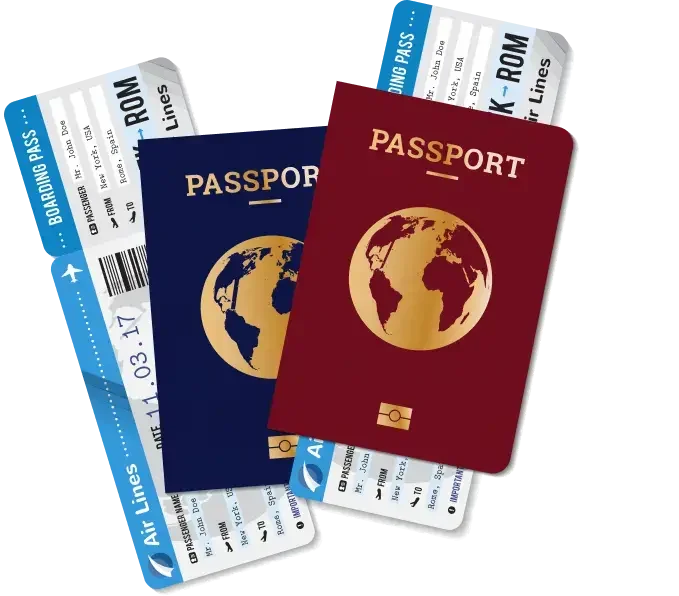Population
GDP (per capital)
Visa-Free Countries
GDP (purchasing power parity)
The United States is widely recognized as a land of opportunity, attracting people from all over the world who dream of building a brighter future. As one of the most powerful and innovative countries on the globe, the U.S. offers countless advantages to newcomers. From a thriving economy and world-leading universities to cutting-edge technology and diverse career options, America creates an environment where ambition and talent are rewarded. Immigrating to the U.S. means gaining access to high-quality healthcare, a vibrant multicultural society, and the freedom to pursue your goals, whether you want to advance your career, start a business, or provide the best education for your children. The American spirit of innovation and inclusivity welcomes people from every background, encouraging individuals to reach their full potential. For those seeking new horizons and the chance to make a meaningful impact, the United States remains a top destination—offering not just a place to live, but a place to thrive.


The EB-1 and EB-2 visas are two of the most sought-after pathways for skilled professionals aiming to achieve permanent residency in the United States. The EB-1 visa is tailored for individuals who have demonstrated extraordinary ability in fields such as science, the arts, education, business, or athletics. It also includes outstanding professors, researchers, and multinational executives. One of the main advantages of the EB-1 is that applicants can often skip the labor certification process, making it one of the fastest and most efficient routes to a U.S. green card. As of 2025, the EB-1 category remains current for most countries, although applicants from regions with high demand may still face some delays. Recent updates from USCIS have further clarified eligibility, especially for professionals in rapidly growing sectors like artificial intelligence, making the process more accessible and transparent.

The EB-2 visa is a U.S. immigration route tailored for highly skilled professionals—either those with advanced academic credentials or individuals recognized for outstanding talent in their field. It offers a direct path to permanent residency for those whose contributions meaningfully impact the country’s economy, innovation, or public interest. A notable feature is the National Interest Waiver (NIW), which lets qualified applicants skip the usual job offer and labor certification if their work serves a broader national benefit.

As of 2025, the EB-1 remains current for most countries, though some applicants from high-demand regions may face delays
If you’re a highly skilled professional or possess an advanced degree, the EB-2 visa can be your gateway to permanent residency in the United States. Here are the top benefits of the EB-2 visa, based on the latest information from trusted sources:

These visa types cater to different professional and personal goals, making Germany accessible to a wide range of skilled workers and entrepreneurs.
For entrepreneurs or freelancers who want to start a business or work independently in Germany.
For temporary, short-term employment in sectors with seasonal demand, such as agriculture, tourism, or hospitality.
| Form/ service | Fee (USD) |
|---|---|
| Form I-140 | $715 |
| Asylum Program Fee | $600 |
| Form I-907 | $2,805 |
| Form I-485 | $1,440 |
| Consular Processing | $325 |
| USCIS Immigrant Fee | $220 |
| Application Step | Fee (USD) |
|---|---|
| PERM labor Certification | No filling fee (but legal fees may apply) |
| Form I-140 | $715 |
| Premium Processing (Optional) | $2,805 |
| Form I-485 (Age 14–78) | $1,440 (includes biometrics) |
| Consular Processing | $345 + $220 USCIS Immigrant Fee |

To qualify for an EB-2 visa, you’ll need a strong mix of education and experience—typically an advanced degree or exceptional ability in your field. The specific requirements depend on which EB-2 path you choose (Advanced Degree, Exceptional Ability, or National Interest Waiver). Each option has its own criteria and evidence requirements, but all lead toward U.S. permanent residency.

To qualify for an EB-2 visa, you’ll need either:
For the National Interest Waiver (NIW), these same qualifications apply, but your work must also show a clear benefit to the U.S. on a national scale.
Most EB-2 applicants need a full-time job offer from a U.S. employer in their field, and the role must match their qualifications.

The process of applying for a EB-1 visa involves several important steps. Below is a straightforward guide to help you navigate each stage of the application:
Collect all necessary documentation to prove eligibility (awards, publications, job offer, employer letters, etc.).
This is the core petition showing you're eligible for EB-1.
EB-1A: You may self-petition.
EB-1B & EB-1C: Requires employer sponsorship.
Check the Visa Bulletin. If your category is current, you can proceed. (As of April 2025, EB-1 is current for most countries.)
Pay an extra fee to receive a response on the I-140 within 15 calendar days.
If approved, you can move forward. If denied, USCIS will explain the reasons and you may appeal or reapply.
Depends on location:
Inside the U.S : File Form I-485 (Adjustment of Status)
Outside the U.S : Begin Consular Processing via the National Visa Center (NVC).
If in the U.S: USCIS will collect your fingerprints, photo, and signature.
Most I-485 applicants attend an in-person interview.
Consular applicants will have their interview abroad.
If approved: You’ll receive your green card in the mail (or visa stamp if abroad).
If denied: You’ll be notified with reasons and next steps (appeal, refile, etc.).
Applying for the EB-2 visa involves a series of carefully sequenced steps. While the path may differ slightly depending on whether you’re applying from within the U.S. or abroad—or whether you qualify for a National Interest Waiver (NIW)—the overall process remains structured and transparent.
After the I-140 is filed, applicants must wait for their priority date to become current. The Visa Bulletin, published monthly by the U.S. Department of State, indicates when green cards are available based on the applicant’s country of birth and preference category. As of 2025, wait times can vary depending on the applicant's country, with shorter queues for countries like Canada and longer ones for India or China. By following these steps, you can smoothly navigate the application process for a Germany work visa. Remember that it’s important to submit accurate and complete documents to avoid delays or complications. Once your visa is issued, you can begin your new life and career in Germany.
For most EB-2 applicants (excluding NIW cases), the first step is obtaining a PERM labor certification from the U.S. Department of Labor. This confirms that no qualified U.S. workers are available for the position and that hiring a foreign national won’t adversely affect local wages.
Once PERM is approved—or immediately for NIW applicants—the sponsoring employer (or the applicant, in the case of NIW) files Form I-140 with USCIS. This petition establishes the applicant’s qualifications and confirms the legitimacy of the job offer or proposed work.
Once the priority date is current:
1- Applicants already in the U.S. file Form I-485 to adjust their status to permanent resident.
2- Those outside the U.S. go through consular processing, attending an interview at a U.S. embassy or consulate in their home country.
It depends on the category. EB-1A applicants do not need a job offer and can self-petition. EB-1B and EB-1C applicants must have a job offer and sponsorship from a U.S. employer.
Standard processing for Form I-140 takes about 6 to 12 months. With premium processing, a decision is issued within 15 calendar days.
A strong petition includes solid documentation like major awards, publications, media features, and specific letters of recommendation. Quality and credibility of evidence are more important than quantity.
Key benefits include no labor certification, faster green card processing, and self-petitioning for EB-1A. It’s one of the quickest routes to permanent residency for high-achievers.
Yes. EB-1 remains current for most countries, but scrutiny has increased—especially for self-petitioners. AI professionals are seeing more interest, but must now meet new evaluation guidelines.
It depends on your country and if you use premium processing:
PERM: 6–10 months
I-140: 6–12 months (15 days with premium)
Final step (AOS or consular): 8–14 months
Backlogs apply for India and China.
It’s your place in line for a green card. You can only move forward when your date is “current” on the Visa Bulletin.
Yes. Your spouse and kids under 21 can apply as dependents. Spouses may also be eligible for a work permit.
Yes, if you qualify for EB-2 and your employer supports it. You may keep your original EB-3 priority date.
Compare the different programs in a nutshell and discover their features
Check the cost estimates for each offered program
Explore the power of global mobility for every passport in the world
Would you like to receive our monthly CitizenMatch Newsletter?
Citizen Match is a smart civic engagement platform designed to bridge the gap between citizens and institutions — fostering transparency, accountability, and meaningful public participation in shaping better communities.
Address:
155 N Wacker Dr Suite 4250, Chicago, IL, 60606
Phone Nymber:
Mailing Address:
info@CitizenMatch.com